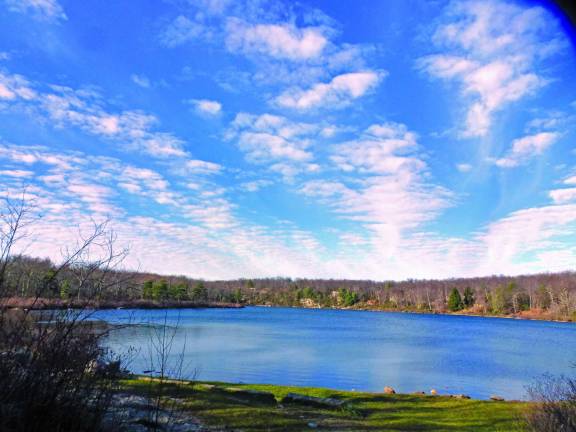A break from the Anthropocene

There goes the Holocene. While I’d been going about my business, scientists have turned the page. Now, they say, we’re living in the Anthropocene, the “Age of Man.” You can’t escape it, even in the woods. From the road you may see an undifferentiated mass of wilderness, green and dense. But the trail soon reveals the traces of those who have passed before, starting with the cleared path under your feet. You may follow a length of stone wall for a mile or two, or round a bend to find a sagging deer blind, or a derelict hand pump, or the ruins of an ancient forge. You might have to pick your way over the shifting slag of an old quarry, or cross under an electrical transmission line as it emits a low, ominous hum. Cell phone towers bristle on every ridge.
And then there are the gates. The National Park Service loves gates. I understand the need to control the mighty Anthropocenic forces undermining the wilderness, if that is the word, the park service has sworn to protect. But I’m naturally disappointed whenever a gate blocks my progress to the trailhead. Sometimes, like after a storm, a road bottoms out, and so does the budget for repairs. Sometimes roads close for winter to spare the cost of plowing. It makes me a little sad, though, to see wilderness cordoned off, like an artifact whose rarity puts it at risk.
One particular gate interests me especially when April comes around, on Blue Mountain Lakes Road, which leads to Crater Lake. We know the road opens up in April but we’re never sure exactly when. The road is unmaintained, and sometimes the snow lingers. But it’s such a great trail for early spring, we head down and take our shot. If we’re too early, we find ourselves at the barricades, gripping our hiking poles like lances, considering an Ammon Bundy-type takeover of federal lands, if only for just a few hours. But if we find the gate swung open, it’s like the door opening to spring itself.
From the spur trail leading out of the parking lot we connect with the Appalachian Trail and walk north to Bird Mountain, returning on an old woods road whose main attraction, for us, are two good-sized swamps where spring peepers and tree frogs can reliably be heard. We look for black snakes sunning themselves on slabs, lethargic after their long hibernation. We look for new treasure in the washouts left by the retreating snow, like the glint of small crystals winking in the mud, and the bones of animals that had perished during the winter. We stretch out on the wild grass that grows on the top of Bird Mountain and extract the most from those few hours of sun, when it moves directly over the wide open ridge, that carry the promise of summer.
I love the idea of pristine wilderness, but it’s merely a romantic notion containing the hope of a perfect and guiltless Eden. And, in fact, I am not sorry to see evidence of past lives on the trail. A chimney rising out of an old hearth, stone cold and tangled with vines, conjures up thoughts of the family circle illuminated by firelight. I also like to consider the past lives of the earth itself. Take Crater Lake itself, gouged out more than 10,000 years ago by a glacier up to two miles thick. Nothing resists a river of ice like that. Humans had to get out of the way when all this was going on. Now, it’s people who are changing the weather, not the other way around.
If our glacial past is evident on the loop trail to Bird Mountain, our human past is a mere romantic relic. From the top of the ridge the only trace of humanity you can see is Walpack township, a mostly depopulated 19th-century village in one of the most populous states in the nation. For lunch, we always pull up a rock overlooking this collection of little white structures — post office, school, church — that look as picturesque from the top of the ridge as they do on the bottom, but less spooky. If the Anthropocene is too much with you, it’s a pretty good place to take a break.
SNEAK PEAK
Trailhead: Crater Lake, Delaware Water Gap National Recreational Area
Trails: Crater Lake trail (orange blazes), to Appalachian Trail (white blazes), to Bird Mountain, returning on Woods Road (unblazed).
Distance: About nine miles